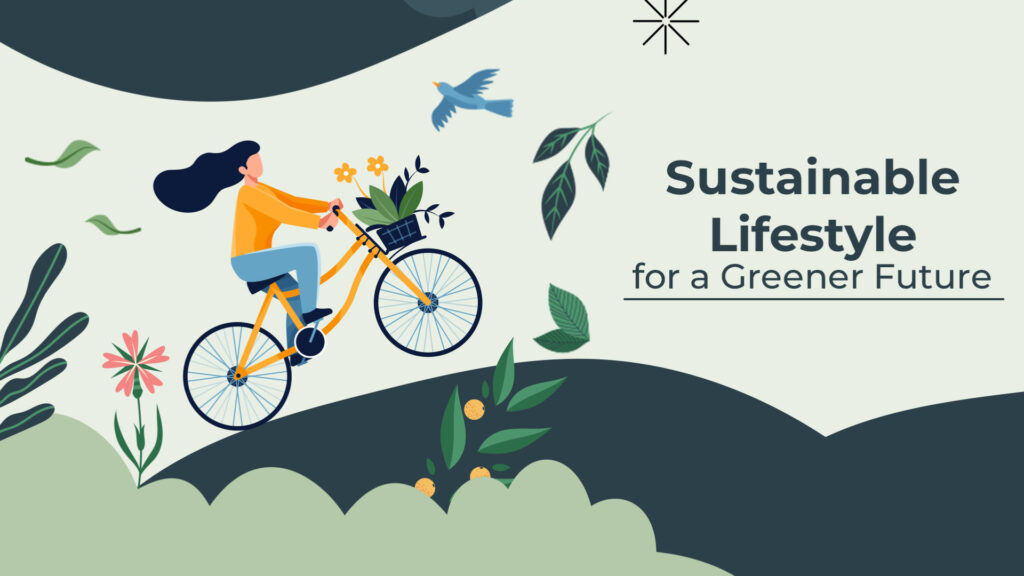- Introduction
- Understanding Sustainable Living
- Key Principles of Sustainable Living
- Benefits of Sustainable Living
- Practical Tips for Sustainable Living
- Renewable Energy Relinquishment
- Conscious Water operation
- Sustainable Structure and Design
- Eco-Friendly Landscaping
- Composting
- Conscious trip
- Sustainable Fashion
- Environmental Education and Advocacy
- Engage in Community enterprise
- Reduce Single-Use Plastics
- Sustainable Parenthood
- Responsible Electronics operation
- Green Business Practices
- nonstop literacy and enhancement
Introduction
In a world scuffling with environmental challenges, sustainable living has surfaced as a lamp of a stopgap. It’s a morality that embraces responsible consumption, renewable coffers, and awareness practices to insure a harmonious concurrence with the earth. Sustainable living encompasses a wide range of conduct, from reducing carbon vestiges to promoting eco-friendly technologies and espousing conscious life choices. This composition explores the principles of sustainable living, highlights its benefits, and offers practical tips for individuals and communities to embrace this transformative way of life.
Understanding Sustainable Living
Sustainable living is an- encompassing approach that seeks to strike a delicate balance between mortal requirements and the preservation of natural coffers for unborn generations. It acknowledges that the Earth’s coffers are finite and fragile, challenging conscious sweats to minimize waste and ecological detriment. At its core, sustainable living aims to meet present requirements without compromising the capability of unborn generations to meet their own.
Key Principles of Sustainable Living
Reduce, Reuse, Recycle:
The three Rs form the foundation of sustainable living. By reducing consumption, reusing particulars, and recycling accouterments, we can significantly minimize our impact on the terrain. This principle encourages individuals to borrow a more minimalist and resource-effective life.
Renewable Energy:
Embracing renewable energy sources similar to solar, wind, and hydropower is vital for sustainable living. Transitioning down from fossil energies towards clean, renewable energy helps combat climate change and reduces dependence on finite coffers.
Conservation and Preservation
guarding ecosystems, biodiversity, and natural territories is essential for sustainable living. Conservation sweats involve conserving timbers, securing exposed species, and promoting sustainable agrarian practices that cover soil health and water coffers.
Sustainable Transport
Promoting sustainable transport options, similar to cycling, walking, and public transportation, reduces carbon emigration and improves air quality. Electric vehicles and carpooling also play a pivotal part in sustainable mobility.
Responsible Consumption
Being aware of our consumption patterns can have a profound impact on sustainability. Choosing products with minimum packaging, concluding for locally sourced and organic food, and supporting ethical brands contribute to a more sustainable frugality.

Benefits of Sustainable Living
Environmental Protection
Sustainable living practices cover the terrain by reducing pollution, conserving coffers, and mollifying the impacts of climate change. They help save ecosystems, cover biodiversity, and ensure a healthier earth for unborn generations.
Profitable Advantages
Sustainable living promotes green diligence and creates employment openings in sectors similar to renewable energy,eco-tourism, and organic husbandry. It also reduces costs associated with energy consumption and waste operation.
Health and Well- being
By embracing sustainable living, individualities can ameliorate their overall well-being. Cleaner air, healthier food choices, and active transportation options contribute to better physical and internal health issues.
Community Engagement
Sustainable living encourages community engagement and collaboration. enterprise similar to community auditoriums, participated coffers, and renewable energy cooperatives foster social cohesion and a sense of participated responsibility.

Practical Tips for Sustainable Living
Conserve Energy
Reduce energy consumption by switching to energy-effective appliances, using LED bulbs, and separating homes. open electronic bias when not in use and maximize natural light and ventilation.
Waste Reduction
Borrow a minimalist life by copping only what’s necessary and choosing durable, long- continuing products. Compost organic waste, reclaim diligently, and repurpose or contribute particulars rather than throwing them down.
Sustainable Diet
Incorporate further factory-grounded refections into your diet. Consuming lower meat and dairy reduces carbon emigration and promotes sustainable land use. Support original growers and choose organic yield whenever possible.
Water Conservation
Conserve water by fixing leaks, using low-inflow institutions, and collecting rainwater for gardening. Limit shower times and consider xeriscaping ways for landscaping that minimizes water operation.
Sustainable Mobility
Opt for eco-friendly transportation options similar to cycling, walking, or using public conveyance. Carpooling, auto-sharing, or switching to electric vehicles further reduce carbon emigration.
Support Sustainable Businesses
Choose products from companies that prioritize sustainable practices, fair trade, and ethical sourcing. Look for eco-labels and instruments that guarantee environmental and social responsibility.
Here are some additional aspects of sustainable living that you can explore:
Renewable Energy Relinquishment
Consider installing solar panels or wind turbines to induce clean, renewable energy for your home. This reduces reliance on fossil energies and contributes to a more sustainable energy system.
Conscious Water operation
Practice water-saving ways similar to taking shorter showers, using a low-inflow restroom, and collecting rainwater for colorful purposes. Be aware of water operation in everyday conditioning like dishwashing and laundry.
Sustainable Structure and Design
still, prioritize sustainable structure accouterments and energy-effective design, If you are constructing a new home or revamping a being one. Use eco-friendly sequestration, employ natural lighting strategies, and consider incorporating unresistant heating and cooling ways.
Eco-Friendly Landscaping
Design your out-of-door space with sustainable landscaping practices in mind. Plant native species that bear lower water and conservation, produce rain auditoriums to capture and filter stormwater runoff and use natural pest control styles rather than dangerous chemicals.
Composting
Start a compost pile or use a composting caddy to reclaim food scraps and yard waste. Composting enriches the soil, reduces the need for chemical diseases, and diverts organic waste from tips.
Conscious trip
When planning recesses or passages, conclude with eco-friendly trip options. Consider exploring original destinations, using public transportation, or negativing your carbon footmark by investing in carbon-neutral systems.
Sustainable Fashion
Support sustainable fashion by buying clothes from ethical and eco-conscious brands. Choose high-quality, durable garments, and consider alternate-hand or quaint options. duly watch for your clothes to extend their lifetime.
Environmental Education and Advocacy
Stay informed about environmental issues and partake your knowledge with others. Support associations working towards sustainability and advocate for programs that prioritize environmental protection.
Engage in Community enterprise
Join original sustainability enterprises, neighborhood associations, or environmental groups. unite with others to organize community events, promote recycling programs, or establish community auditoriums.
Reduce Single-Use Plastics
Minimize the use of single-use plastics similar to plastic bags, bottles, and straws. Carry applicable bags and water bottles, and choose products with minimum packaging.
Sustainable Parenthood
Raise environmentally conscious children by tutoring them about sustainability, involving them in eco-friendly practices, and encouraging their connection with nature.
Responsible Electronics operation
Extend the lifetime of electronic biases by duly maintaining and repairing them. contribute or reclaim old electronics at technical waste collection points to help dangerous substances from entering the terrain.
Green Business Practices
still, apply sustainable practices similar to energy-effective lighting, and waste reduction strategies, If you enjoy or work for a business.
nonstop literacy and enhancement
Stay open to learning new ways to live sustainably and acclimatize your life consequently. Embrace inventions and technologies that promote sustainability and strive for nonstop enhancement.






